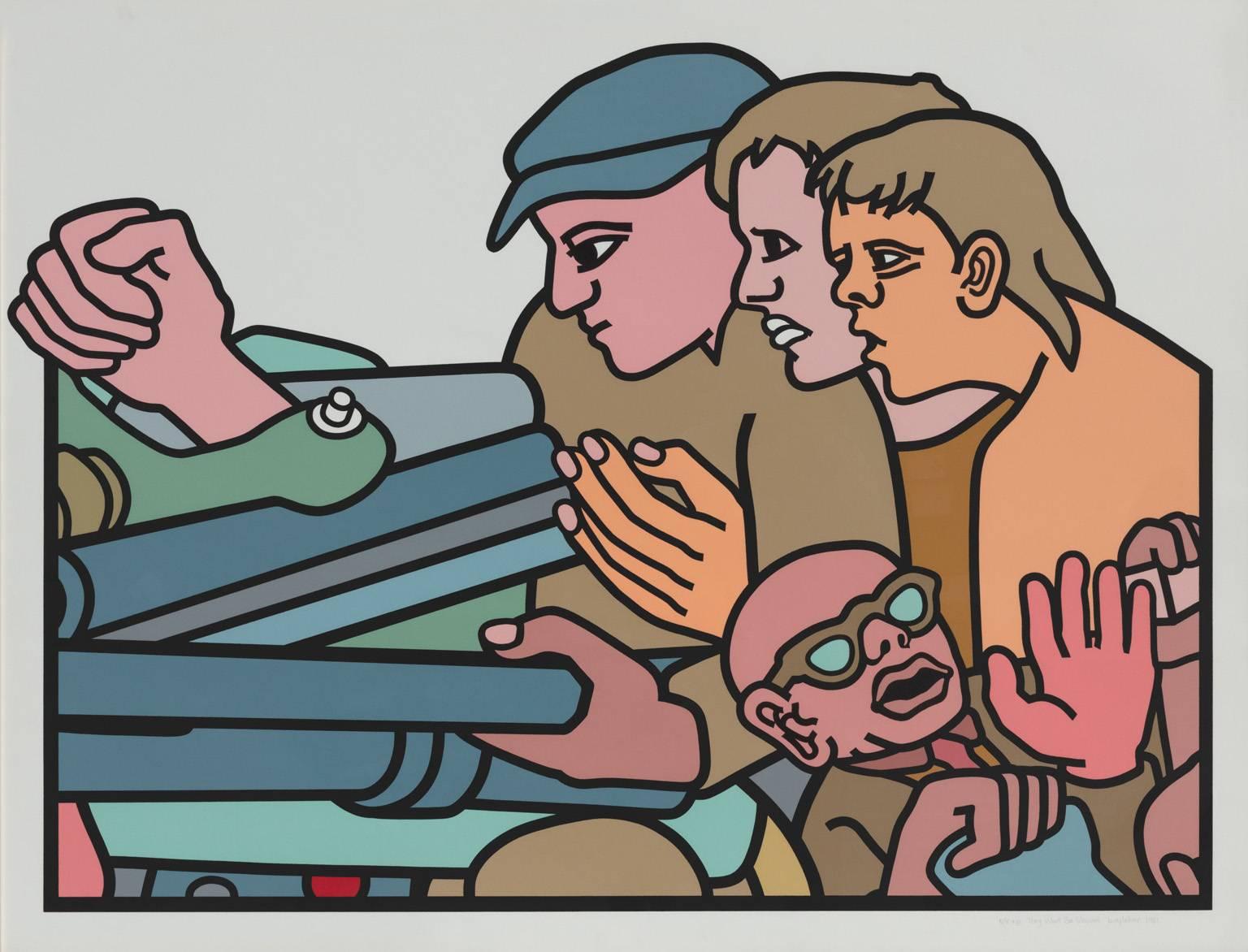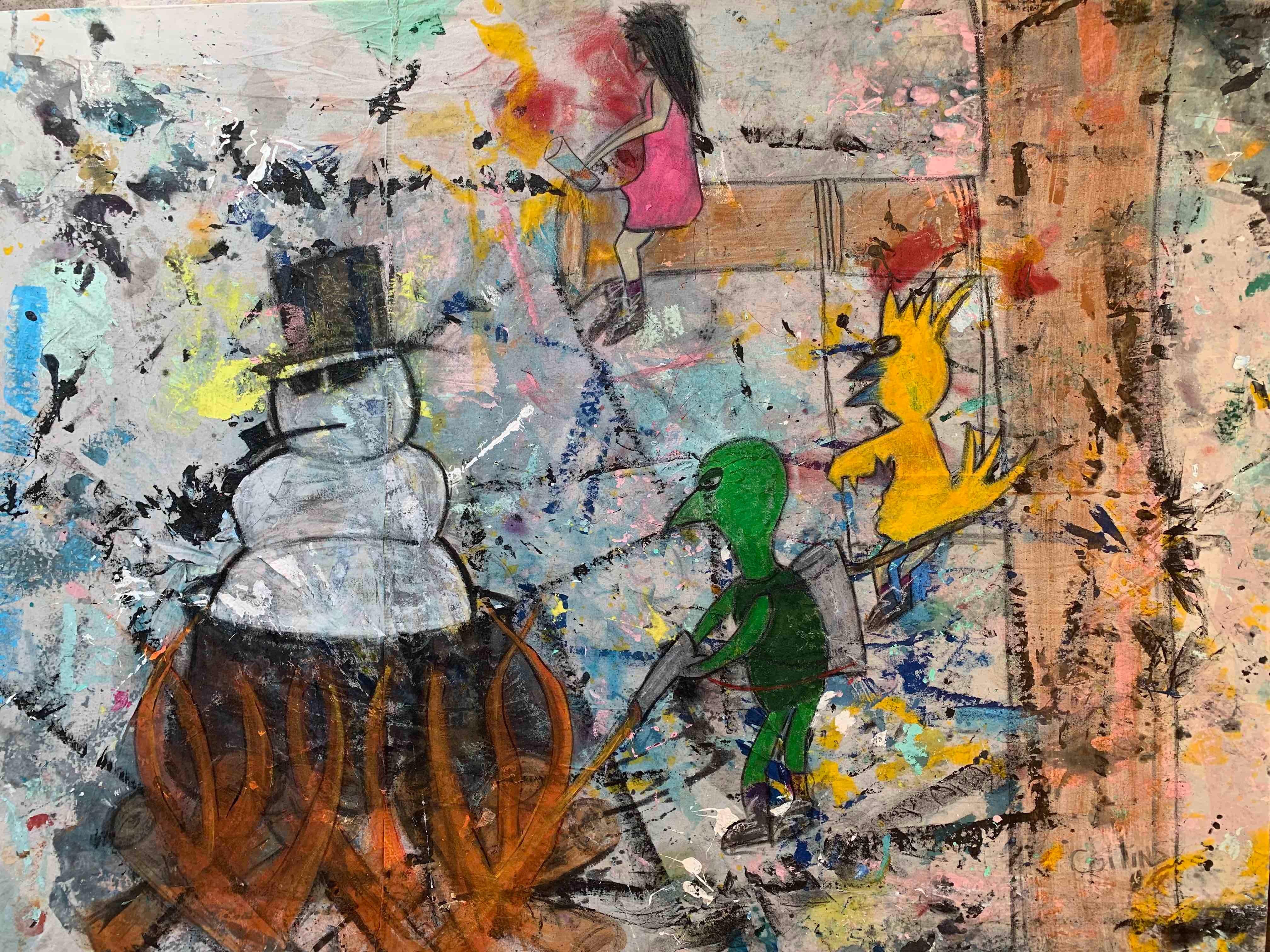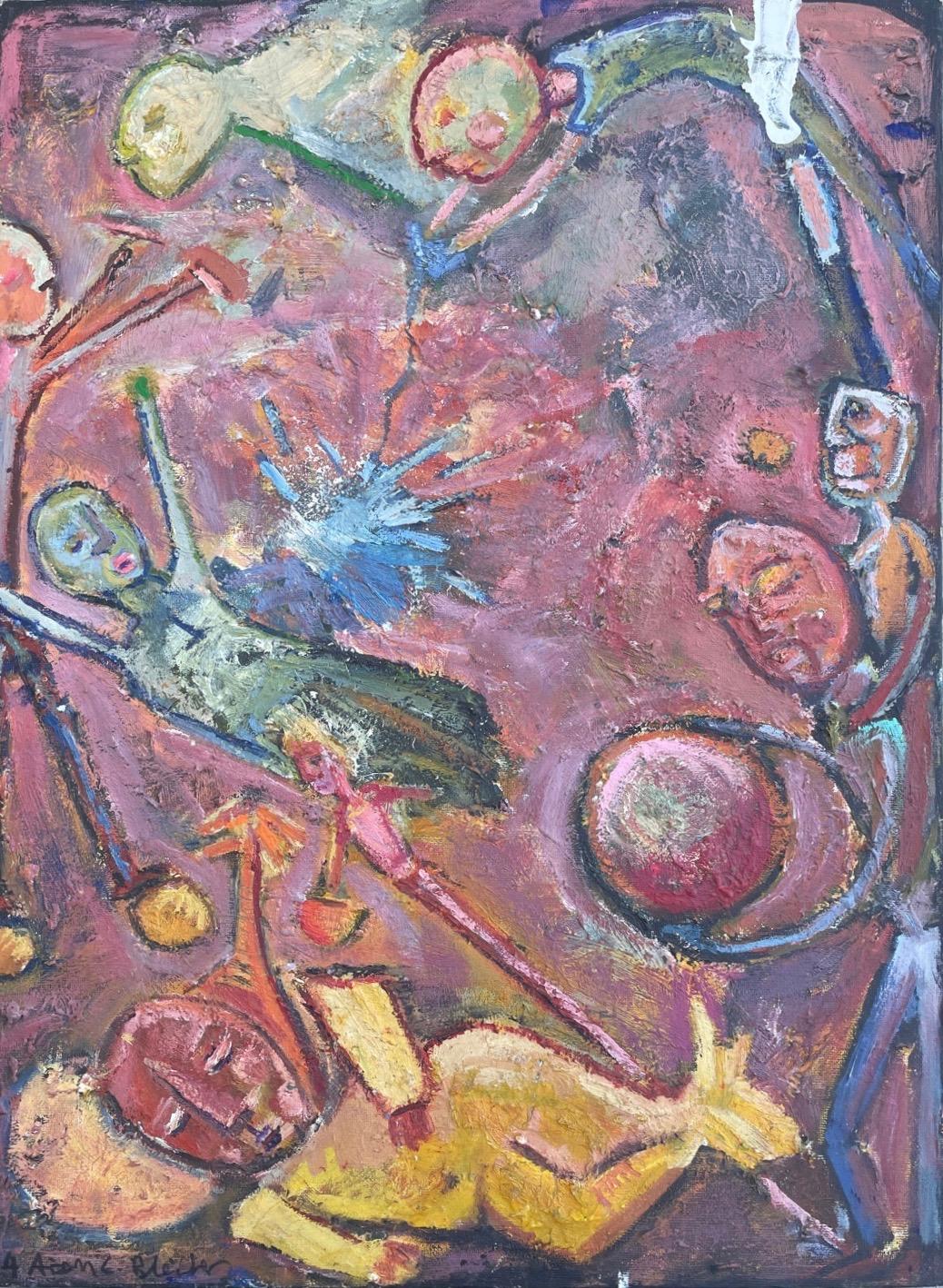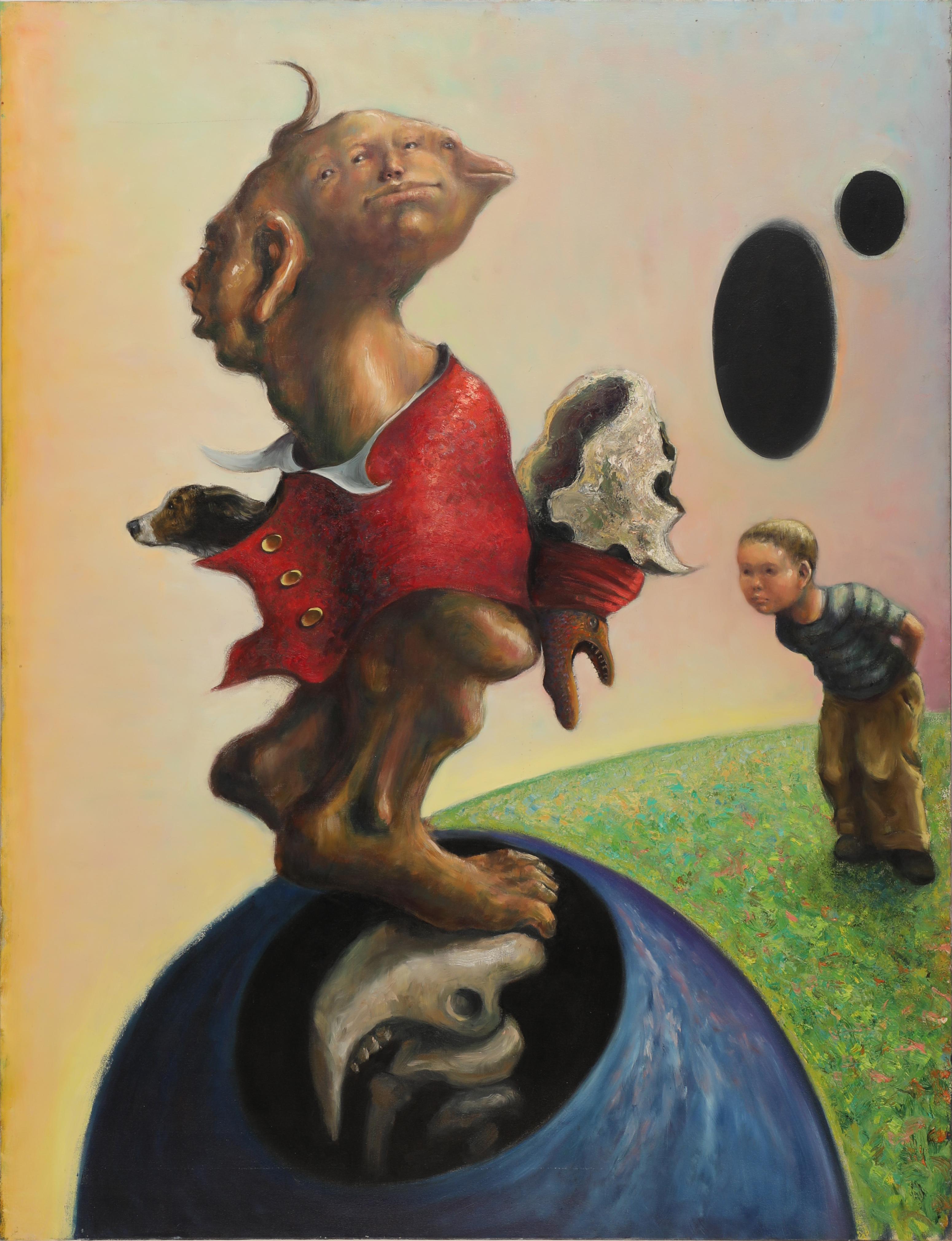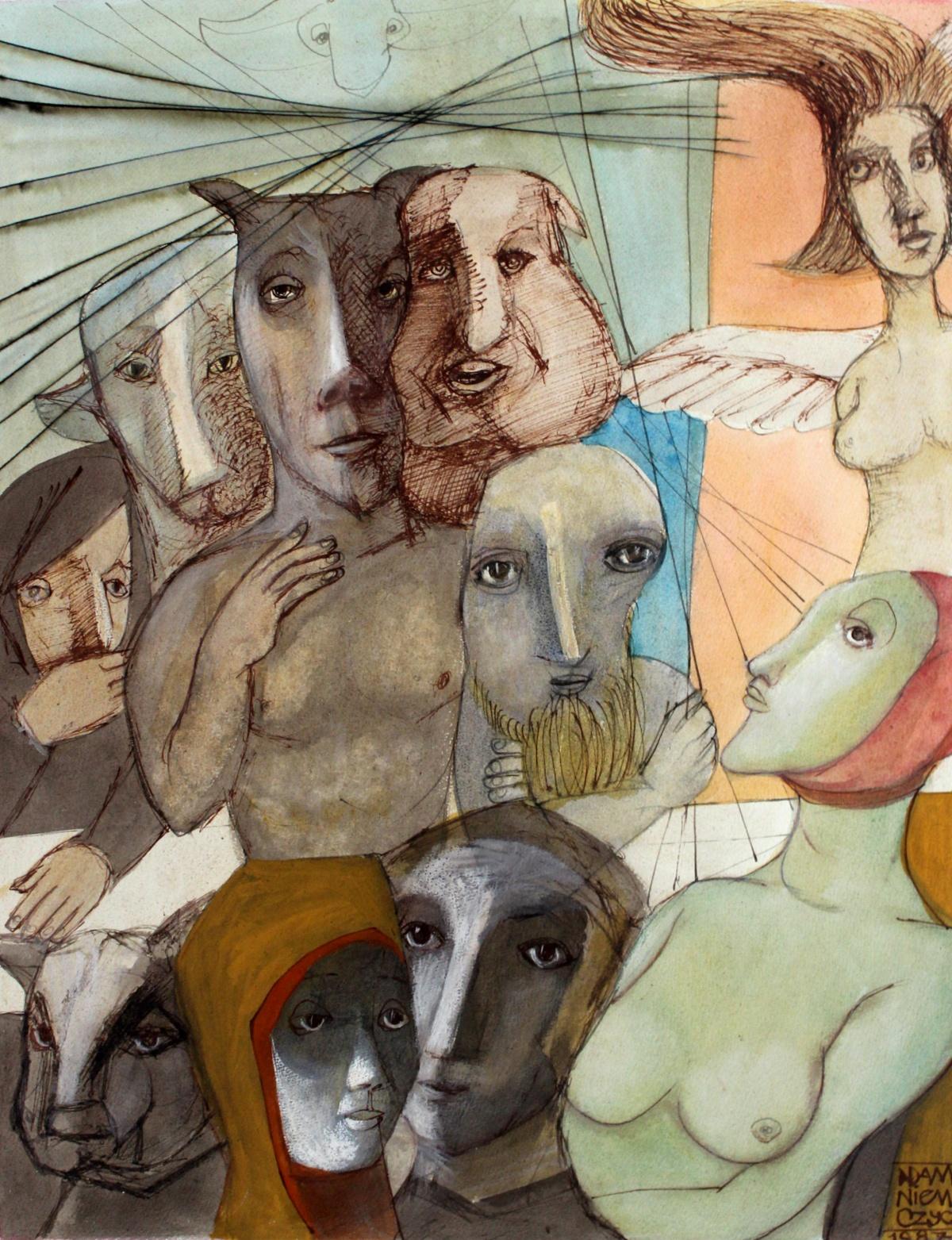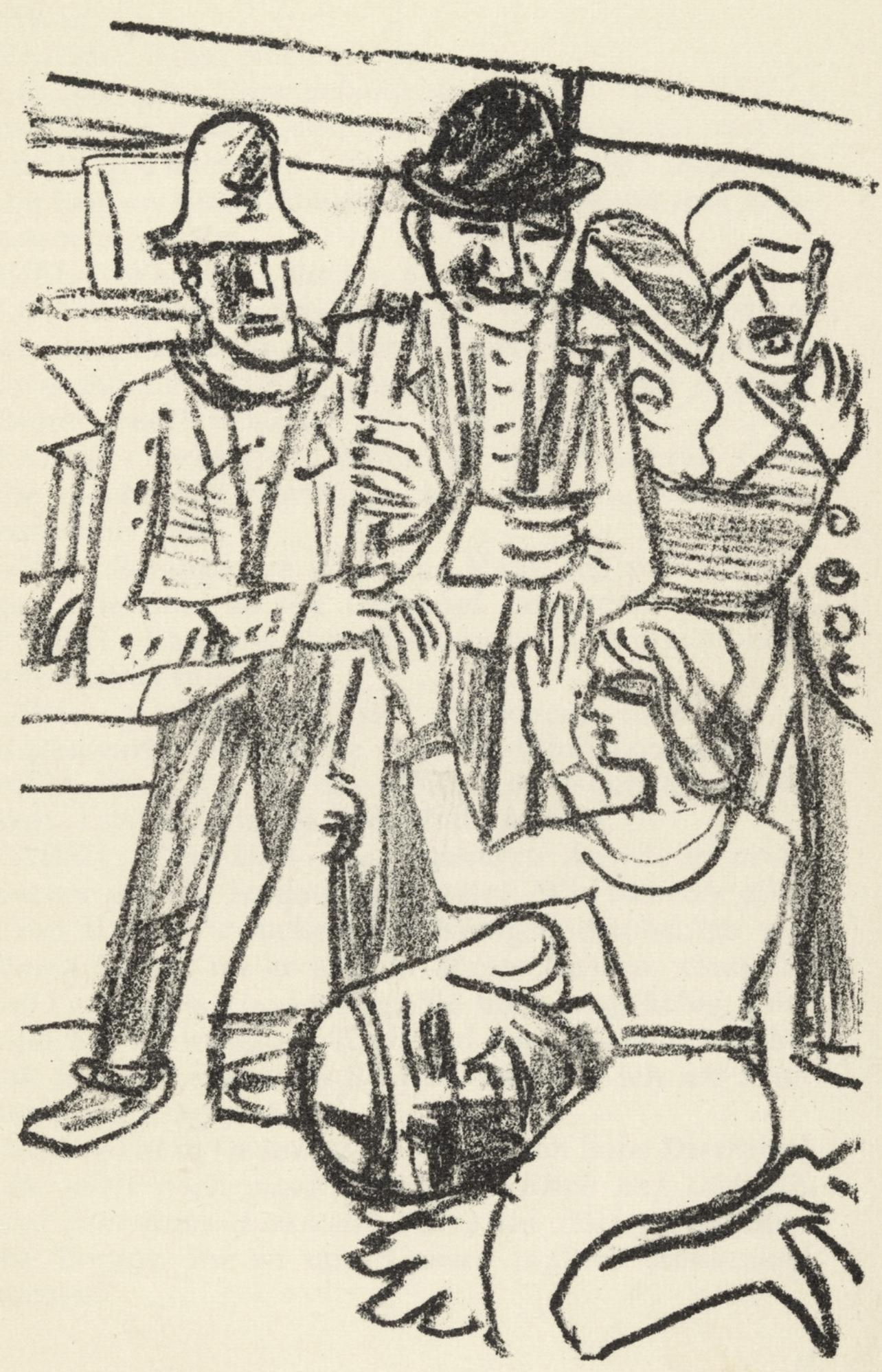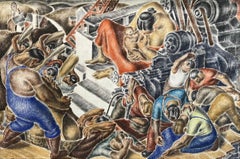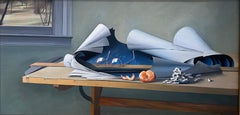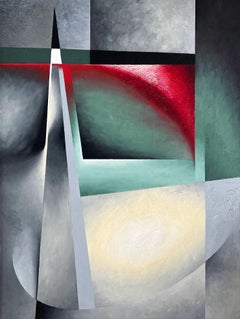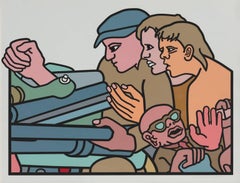Items Similar to The Demagogue or Tale in a Tub
Want more images or videos?
Request additional images or videos from the seller
1 of 6
Bendor MarkThe Demagogue or Tale in a Tub1952
1952
$15,000
£11,320.09
€12,959.79
CA$21,154.97
A$23,225.52
CHF 12,116.80
MX$281,061.15
NOK 151,865.34
SEK 143,097.08
DKK 96,741.36
About the Item
The Demagogue or Tale in a Tub, 1952, oil on canvas, 24 x 20 inches, signed, titled, and dated verso, presented in a newer frame
The Demagogue is an iconic Bendor Mark painting from the prime of his post-war period. Beginning early in his career, Mark was fascinated with depictions of the human figure and their capacity to tell stories of the world around him. Mark was a keen observer of his times and in The Demagogue we see Mark’s portrayal of a faithless politician holding up a “V” for victory sign as he appeals to the wanton desires and prejudices of the masses. Below the demagogue is a swirl of humanity representing the common man who is being pushed down by the powerful, while the robed figure of liberty with her scales of justice held high is brushed aside. Behind the demagogue, Mark places two other powerful supporting institutions which were often co-opted by the world’s dictators, the church and the military.
Mark was an internationalist, so it is difficult to know exactly which demagogue inspired him to create this work, but in 1952 there were many to choose from. Whether depicting Argentina’s Peron (the demagogue and the women to the right resemble Juan and Eva Peron), Spain’s Franco or the United States’ homegrown fear mongers like Joseph McCarthy, Mark tells a universal story that unfolded in dramatic fashion during the post-war period as nations and their peoples grappled with authoritarianism and anti-democratic impulses. Stylistically, The Demagogue draws on the elements which make Mark’s work from this period immediately recognizable, a saturated palette, a closely packed and frenetic composition, exaggerated figuration and stylized facial features. But, above all, we see Mark’s ability to tell the stories of the rich and powerful and their ability to oppress. Like Mark’s work in the collection of the Whitney Museum of American Art (The Hourglass - 1950-51) and the Los Angeles County Museum of Art (Execution – 1940), The Demagogue pulls no punches, as the artist lays bare the threats to freedom and basic human rights.
Bendor Mark was an American modernist and social realist painter. Born as Bernard Marcus on June 5, 1912, in Brooklyn, New York, Mark trained at The Cooper Union during the 1920s where he studied with William Brantley van Ingen and became a prize-winning artist with a focus on painting the human figure. After his time at Cooper, Mark continued to live in New York and worked as a commercial artist and textile designer in addition to his pursuit of a career in painting. Like many Depression Era artists, Mark engaged with social progressives and in 1934, he joined the Artist’s Union which had the goal of advancing artists’ position as “worker.” Mark’s painting, Restaurant, which is now in the permanent collection of the Smithsonian American Art Museum, appeared in the February 1936 edition of the Union’s publication, Art Front, as part of a review of an exhibition at ACA Gallery in New York.
Mark worked on the Federal Art Project and by the mid- to late-1930s, began a series of paintings exploring the working conditions and hazards of the mining industry. Mark believed that miners were “in the forefront of the struggle for emancipation” and that the mere “struggle for existence is like moving mountains.” He became passionate about the Spanish Civil War and painted sympathetic images in support of the Spanish Republic. Mark was a premature anti-fascist and throughout his career painted works critical of dictators and other oppressors. During the late 1930s, Mark entered mural competitions with designs influenced by the Mexican muralists, taught adult art education in Queens, New York, and was an instructor at the WPA’s Queensboro Art Center. He was so committed to socially progressive art that by 1934, he had changed his name to Bendor Mark, in part, to distinguish his social realist paintings from his earlier work.
During World War II, Mark worked as an artist for military contractors. After the war, he was employed as a graphic artist and in the printing industry before moving to Southern California in 1948, where he returned to a fine art practice the following year with politically and socially charged images which reflected his view of the shortcomings of the post-War period, the continued threat of fascism, and the international tensions of the Cold War. As the mood of the country shifted towards the right during the McCarthy Era and the art world’s attention focused on abstraction at the expense of figuration, Mark’s career as a painter suffered.
From the 1950s through the 1980s, Mark continued to depict the events that shaped the world around him, often employing a highly stylized approach characterized by dynamic multi-figure compositions, a subtle muted palette, and exaggerated expressive features. A review of Mark’s oeuvre suggests that few people escaped Mark’s attention. He painted presidents, prime ministers, royalty, evangelists, musicians, and dictators (and their henchman), along with miners, farm workers, the urban poor, protesters, the unemployed and dispossessed. He laid bare the arrogance, cruelty, and hypocrisy of the world’s elites. Mark noted, “A work of art cannot be fully appreciated or wholly understood without considering the socio-political and cultural ambience that gave it birth.” He continued, “I have the ability to foresee the direction of social and political events while they are actually taking place.” He was not himself a direct political activist, however. Although Mark commented, “It’s a misconception to separate art from the social aspect of life,” he viewed artists as being neutral. According to Mark, “An apolitical attitude reflects the fact that the artist is passive. . . An artist never affects society; he merely reflects it.”
In addition to the Mexican Muralists, Mark was influenced by the old masters Rembrandt, Michelangelo, and Masaccio, as well as the more modern master, Van Gogh. Mark’s writings directly acknowledge these influences and archival material from his estate includes magazine articles, pamphlets and transparencies related to these artists. Mark also collected materials related to several of his social realist contemporaries, including Reginald Marsh, Ben Shahn, Leonard Baskin, and Raphael Soyer, who was Mark’s good friend. For years, Soyer sent Mark holiday cards and Soyer inscribed a message of friendship on a self-portrait he gifted to Mark in the 1970s, all of which are still held in the collection of Mark’s family.
From the late 1920s through the mid-1950s, Mark’s work was well received. His paintings won prizes and were accepted into major juried exhibitions including at the Brooklyn Museum, the New York World’s Fair and the Metropolitan Museum of Art. He gained national recognition for paintings depicting the oppressed and the common worker. Despite the decline in popularity of representational art during the 1950s and 1960s, Mark stayed true to his interest in depicting the human figure and by the last two decades of his life, his work underwent a reassessment as curators included Mark’s paintings in exhibitions showcasing the role of labor in art during the Depression Era. This recognition continued in recent years when Mark was honored by having his work included in the Whitney Museum of American Art’s ground-breaking exhibition, Vida Americana, which explored the pioneering role that the Mexican muralists played in the development of modern American art during the inter-war period. The influence of Rivera, Siqueiros and Orozco on Mark is unmistakable and his paintings from the 1950s (and beyond) sit comfortably in dialogue with other Los Angeles artists who continued to paint in the social realist tradition long after the mainstream art world had moved toward abstraction. Mark’s concern for underserved Brown and Black communities was shared with artists such as Charles White and his ally, Edward Biberman. Moreover, Mark’s stylization of the human form, his tightly packed compositions, and the exaggerated facial expressions of his subjects merit comparison to White’s work from this period.
There is an other worldly quality to Mark’s work which combines elements of social realism, modernism, magic realism and political cartooning. Mark’s synthesis of these genres and the resulting paintings are unique testaments to his distinct artistic vision and the times in which he lived. Many of his paintings have an overt narrative quality with clear references to his subjects and the underlying messages of his art. Once a viewer becomes familiar with the work, Mark’s paintings are immediately recognizable, as no other artist pursued a similar style. Whether portraying the famous, the infamous or the common, Mark’s work leaves little doubt about his concern for the individual and the fundamental rights of humanity. Although many of the topics he depicted were visually hard-hitting and troubling, his goal was to provide a sense of “hope, dignity, and a determination to better things.” He was an intellectual artist. Mark stated, “Painting for me is more than meets the eye, its what’s on the brain.” For Mark, his observations of the world around him where just as valid as any essay, lecture, or scholarly book and he prophesized that if the world did not destroy itself in a nuclear holocaust, then his paintings would forever be a part of American history.
Mark is listed in Who was Who in American Art and other standard references, and his paintings are in the permanent collections of major institutions, including the Smithsonian American Art Museum, the Whitney Museum of American Art, the Los Angeles County Museum of Art, and the Butler Institute of American Art. Mark’s paintings have rarely been offered and no major paintings have been presented at auction.
- Creator:Bendor Mark (1912, American)
- Creation Year:1952
- Dimensions:Height: 24 in (60.96 cm)Width: 20 in (50.8 cm)Depth: 2 in (5.08 cm)
- More Editions & Sizes:24 x 20 inchesPrice: $15,000
- Medium:
- Movement & Style:
- Period:
- Condition:
- Gallery Location:Los Angeles, CA
- Reference Number:1stDibs: LU1859215629342
About the Seller
5.0
Vetted Professional Seller
Every seller passes strict standards for authenticity and reliability
1stDibs seller since 2022
17 sales on 1stDibs
Typical response time: <1 hour
- ShippingRetrieving quote...Shipping from: Los Angeles, CA
- Return Policy
Authenticity Guarantee
In the unlikely event there’s an issue with an item’s authenticity, contact us within 1 year for a full refund. DetailsMoney-Back Guarantee
If your item is not as described, is damaged in transit, or does not arrive, contact us within 7 days for a full refund. Details24-Hour Cancellation
You have a 24-hour grace period in which to reconsider your purchase, with no questions asked.Vetted Professional Sellers
Our world-class sellers must adhere to strict standards for service and quality, maintaining the integrity of our listings.Price-Match Guarantee
If you find that a seller listed the same item for a lower price elsewhere, we’ll match it.Trusted Global Delivery
Our best-in-class carrier network provides specialized shipping options worldwide, including custom delivery.More From This Seller
View AllThe Show is On
Located in Los Angeles, CA
The Show is On, 1940, oil on canvas, signed and dated lower right, 24 x 20 inches, exhibited: 30th Annual Exhibition of the Associated Artists of Pittsburgh, Carnegie Institute, Pitt...
Category
1940s American Modern Figurative Paintings
Materials
Canvas, Oil
Farm Tragedy (Untitled)
Located in Los Angeles, CA
Farm Tragedy (Untitled), c. 1930s, mixed media on plaster on panel, unsigned, 22 1/8 x 32 inches; label verso reads: "New York Artists Equity Association, New York, NY," provenance i...
Category
1930s American Modern Figurative Paintings
Materials
Mixed Media
Unfinished Problem
Located in Los Angeles, CA
Unfinished Problem, by 1953, oil on canvas, signed lower right, signed and inscribed verso on stretcher “Charles Goeller/1272 Clinton Place, Elizabeth, NJ...
Category
1950s American Modern Interior Paintings
Materials
Canvas, Oil
Abstract
Located in Los Angeles, CA
This painting is part of our exhibition Charles Goeller: A Wistful Loneliness.
Oil on canvas, 29 x 22 inches, Signed on frame verso “Painted by Charles L. Goeller”
Exhibited:
(Perh...
Category
1930s American Modern Abstract Paintings
Materials
Oil
What a Life
Located in Los Angeles, CA
What a Life, c. 1930, mixed media on board, 18 x 24 inches, signed lower left; titled on label; exhibited at The San Francisco Art Association Fifty-Second Annual Exhibition at the P...
Category
1920s American Modern Figurative Paintings
Materials
Mixed Media
Untitled (Elevated Platform)
Located in Los Angeles, CA
This painting is part of our current exhibition - America Coast to Coast: Artists of the 1940s
Untitled (Elevated Platform), 1950, oil on canvas, signed and dated lower right, 30 x...
Category
1950s American Modern Paintings
Materials
Canvas, Oil
You May Also Like
They Won't Be Stopped
By Bernard Aptekar
Located in New York, NY
As art historian and writer Suzanne Ramljak wrote "the ambivalent relationship between humanity and machinery has informed Aptekar's art from the start and remains a central theme in...
Category
1980s Expressionist Figurative Prints
Materials
Paper, Screen
Price Upon Request
The Drowning Man
By Mike Collins
Located in Santa Monica, CA
Acrylic, interior latex, spray paint, charcoal, oil pastel and oil stick on used drop cloth
Category
21st Century and Contemporary Contemporary Figurative Paintings
Materials
Latex, Charcoal, Oil Pastel, Spray Paint, Acrylic
Price Upon Request
Confliction
By Airom
Located in Santa Monica, CA
Oil and acrylic on canvas.
Category
Early 2000s Contemporary Figurative Paintings
Materials
Canvas, Oil, Acrylic
$650 Sale Price
35% Off
Touchstone
By Robert Jessup
Located in Atlanta, GA
Born in Moscow, Idaho,and raised in Seattle, Robert Jessup received his BFA from the University of Washington in 1975 and his MFA from the University of Iowa in 1979. His work has be...
Category
21st Century and Contemporary Abstract Expressionist Figurative Paintings
Materials
Oil
$18,200
Logic is the man's weakest defence - XX century, Colourful figurative painting
By Adam Niemczyc 1
Located in Warsaw, PL
ADAM NIEMCZYC (born in 1914) Painter, graphic artist, poet, novelist. He practiced easel, mural painting and book illustration. Since 1958 he participated in numerous exhibitions in ...
Category
1980s Other Art Style Figurative Paintings
Materials
Gouache, Cardboard, Tempera
Beckmann, Composition (Hofmaier 323-329), Der Mensch ist kein Haustier (after)
By Max Beckmann
Located in Southampton, NY
Lithograph on Van Gelder Zonen Bütten paper. Inscription: Unsigned and unnumbered, as issued. Good condition. Notes: From the volume, Der Mensch ist kein Haustier, 1937. Published by...
Category
1930s Modern Figurative Prints
Materials
Lithograph
$1,036 Sale Price
58% Off
Free Shipping
